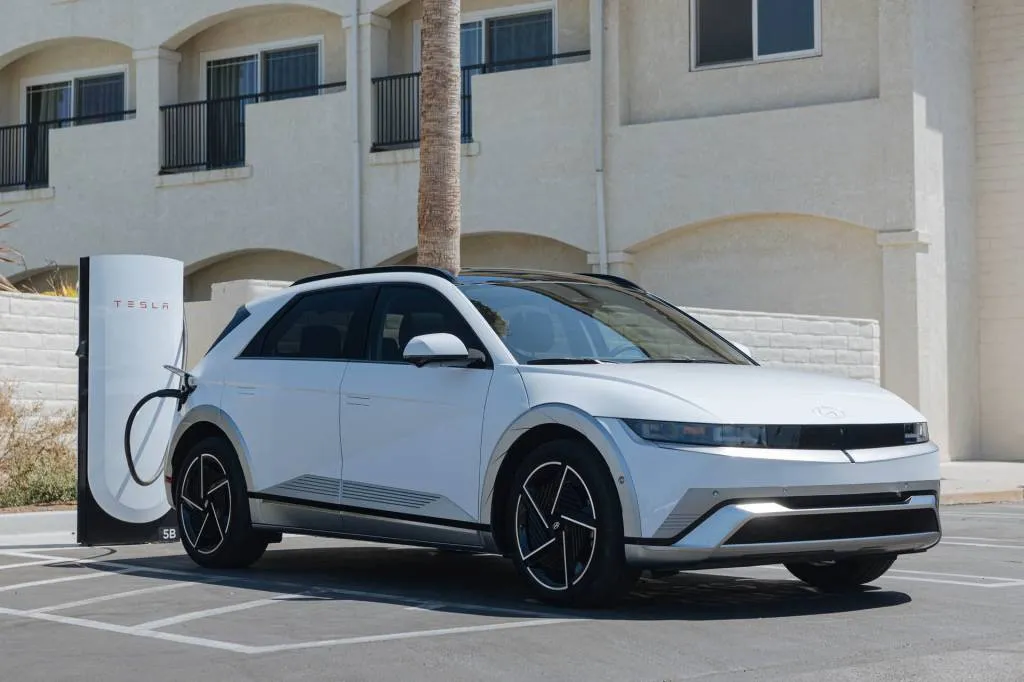- 2025 Hyundai Ioniq 5 is first with native NACS port
- NACS Hyundai EVs might charge faster—for now—with a CCS adapter
- Most Tesla Superchargers can’t charge at 800v at peak rates
- V4 cabinets rolling out in 2025 will finally match CCS
The 2025 Hyundai Ioniq 5, which will be available in U.S. dealerships by the end of the year, is the first mainstream non-Tesla vehicle to come equipped with the Tesla-based NACS charge port, part of the standard known as J3400.
For Hyundai, this marks a shift away from the Combined Charging System (CCS) port that the Ioniq 5 and most non-Tesla electric vehicles have been using up to this point.
The rollout of NACS is unique for Hyundai as they are providing adapters for CCS fast-charging connectors after introducing vehicles with the native NACS port.
Additionally, Hyundai will offer a free NACS adapter for CCS vehicles to access the Tesla Supercharger network until NACS becomes the primary charging method.
The Ioniq 5 charges faster with its included CCS adapter than via NACS due to the current limitations of Tesla Superchargers.

2025 Hyundai Ioniq 5
Adapter needed for the fastest 2025 Ioniq 5 charge
The Tesla Superchargers are currently unable to deliver the voltage required by Hyundai’s EVs built on the 800-volt E-GMP platform, making CCS charging faster for now.
Hyundai’s 84-kwh battery pack can charge at a peak rate of 257 kw with the adapter and a 350-kw CCS connector, providing faster charging times.

Hyundai Ioniq 5 charge times for NACS (Supercharger) vs. CCS
The Ioniq 9 electric SUV will also rely on a CCS adapter for the fastest charge rate with its 110.3-kwh battery pack.
Once Tesla Superchargers are upgraded to support higher voltage, Hyundai’s EVs can take advantage of faster charging speeds without the need for adapters.

Hyundai Ioniq 9 charge times for NACS (Supercharger) vs. CCS
Hyundai is making advancements in charging technology to enhance the charging experience for its EV owners.
Stay tuned for more updates on the transition to NACS ports for Hyundai’s electric vehicles.

